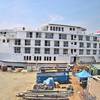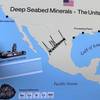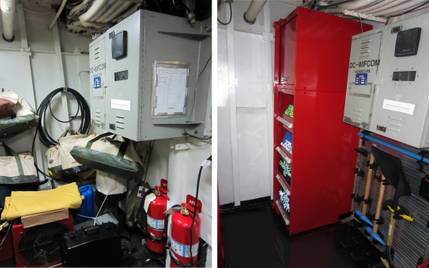ABS Reports Increase in Fleet Size
Speaking at the 150th Annual Members Meeting of the classification society on 24 April 2012, in New York, ABS Chairman Robert D. Somerville reported that every sector of the ABS enterprise “contributed to another year of record performance in terms of the size of the ABS-classed fleet and strong orderbook.” ABS will continue to use its experience and knowledge “to create the innovations that will shape the maritime classification,” said Somerville.
ABS President and CEO Christopher J. Wiernicki told the assembled members, “ABS’ achievements came by maintaining a clear sense of mission with a sharp focus on our clients and the markets we serve. This sense of mission and responsiveness has been at the core of our daily activities for the past 150 years.”
The class society closed the books on 2011 with a fleet that exceeded 185m gt, the largest ever, further cementing ABS’ position as the second largest class society in the world based on gross tonnage. The year-on-year increase in the ABS-classed fleet was 12m gt. Wiernicki attributed the remarkable performance to ABS’ team of dedicated professionals and the strong support of clients around the world.
ABS’ orderbook for new vessels stood at 37m gt at the close of 2011 with an additional 10m gt on orders pending to ABS class. Although worldwide new tonnage orders declined appreciably last year, ABS won an impressive share of the orders placed closing the year with more than 20 percent of the world’s orderbook – the largest share of any class society.
ABS also continued its traditional strong position in the offshore market ending 2011 as the largest classification society for mobile offshore drilling units (MODUs) and floating production units (FPUs). From the time the first offshore drilling rig entered service some 60 years ago, ABS has been the leading class society assisting the offshore industry. By securing a majority share of the new MODUs ordered and a competitive share of the new FPUs, ABS maintained its leading position in this strategically important industry.
“Our continued position in the offshore market is in no small part due to significant investments in the ABS Technology program across the organization,” said Wiernicki. “This not only comes out in new classification standards to assist our clients in meeting regulatory challenges but in our ABS Technology Centers around the world that help our clients address many of their pressing operational concerns ranging from operations in harsh environments to meeting forthcoming environmental requirements.”
A key area of focus in 2011, and into the future, was environmental regulations impacting vessel operations. ABS invested in a wide range of research and development projects to develop services and solutions to assist clients in managing their operations within the evolving regulatory landscape.
“There is no question that one of the biggest operational challenges facing the industry into the future will be how to successfully navigate through the complex environmental regulatory landscape,” stated Wiernicki. “ABS is not only developing solutions to these challenges through our traditional classification services but also developing comprehensive services through ABS Nautical Systems. This approach will continue to cement ABS’ position as the Class of the Future.”












